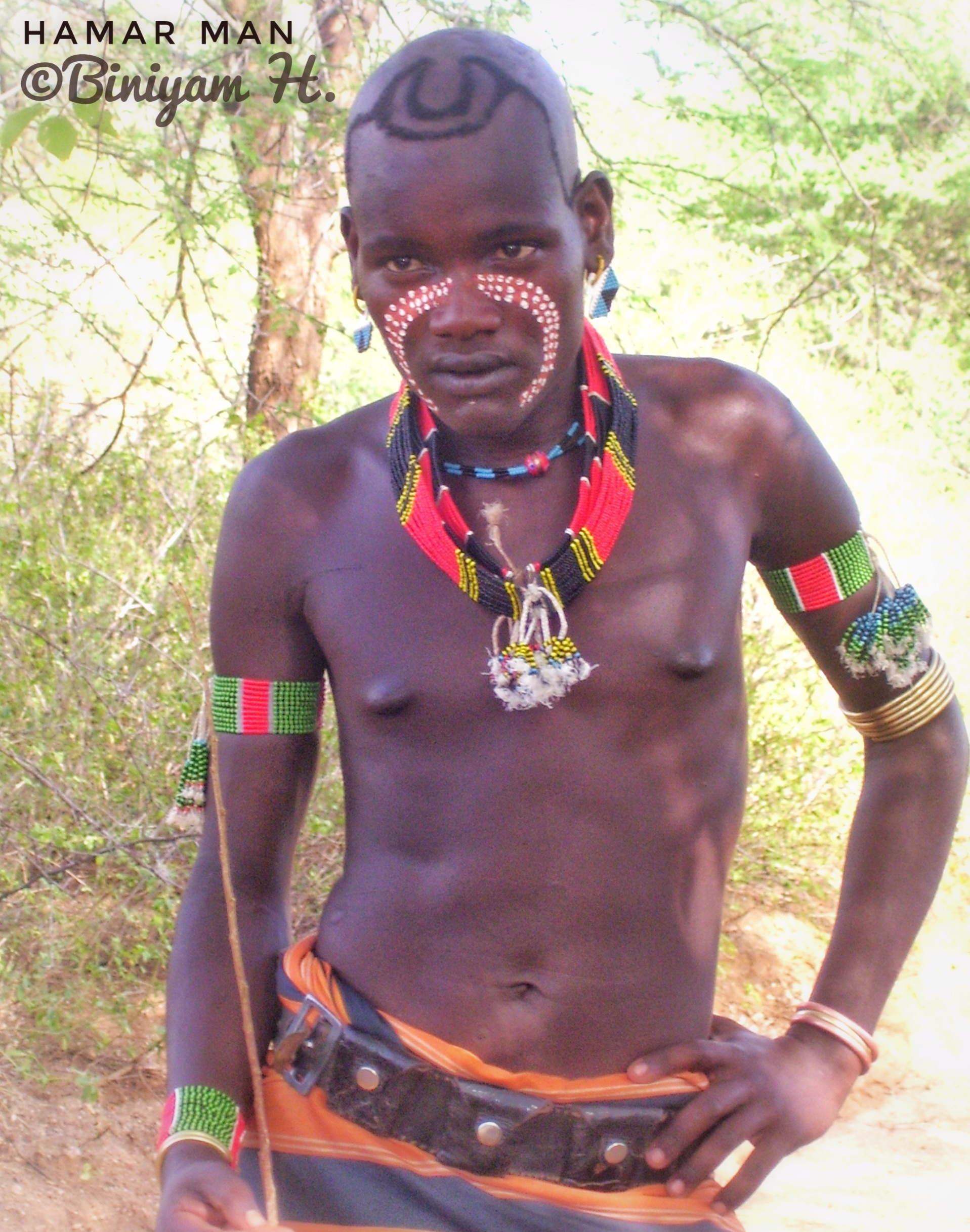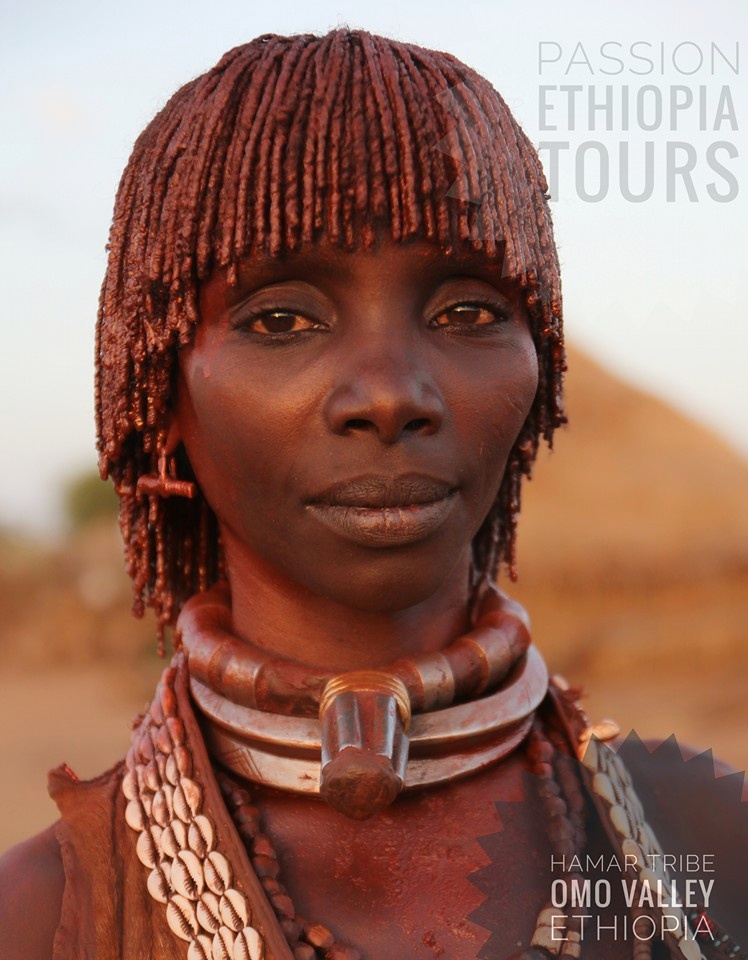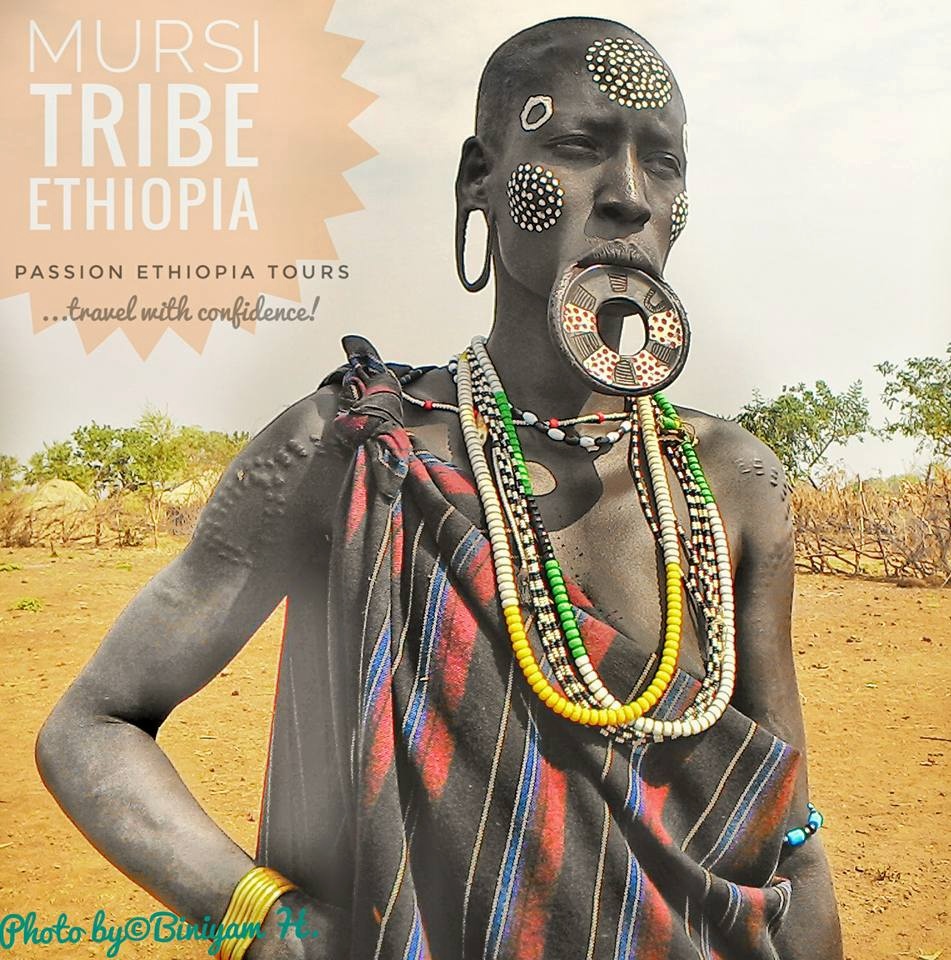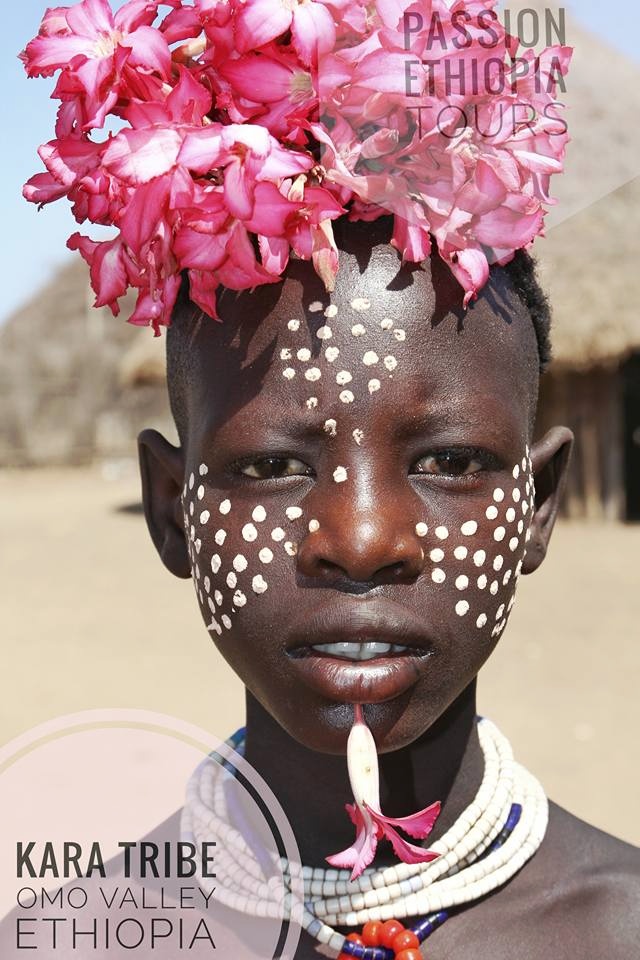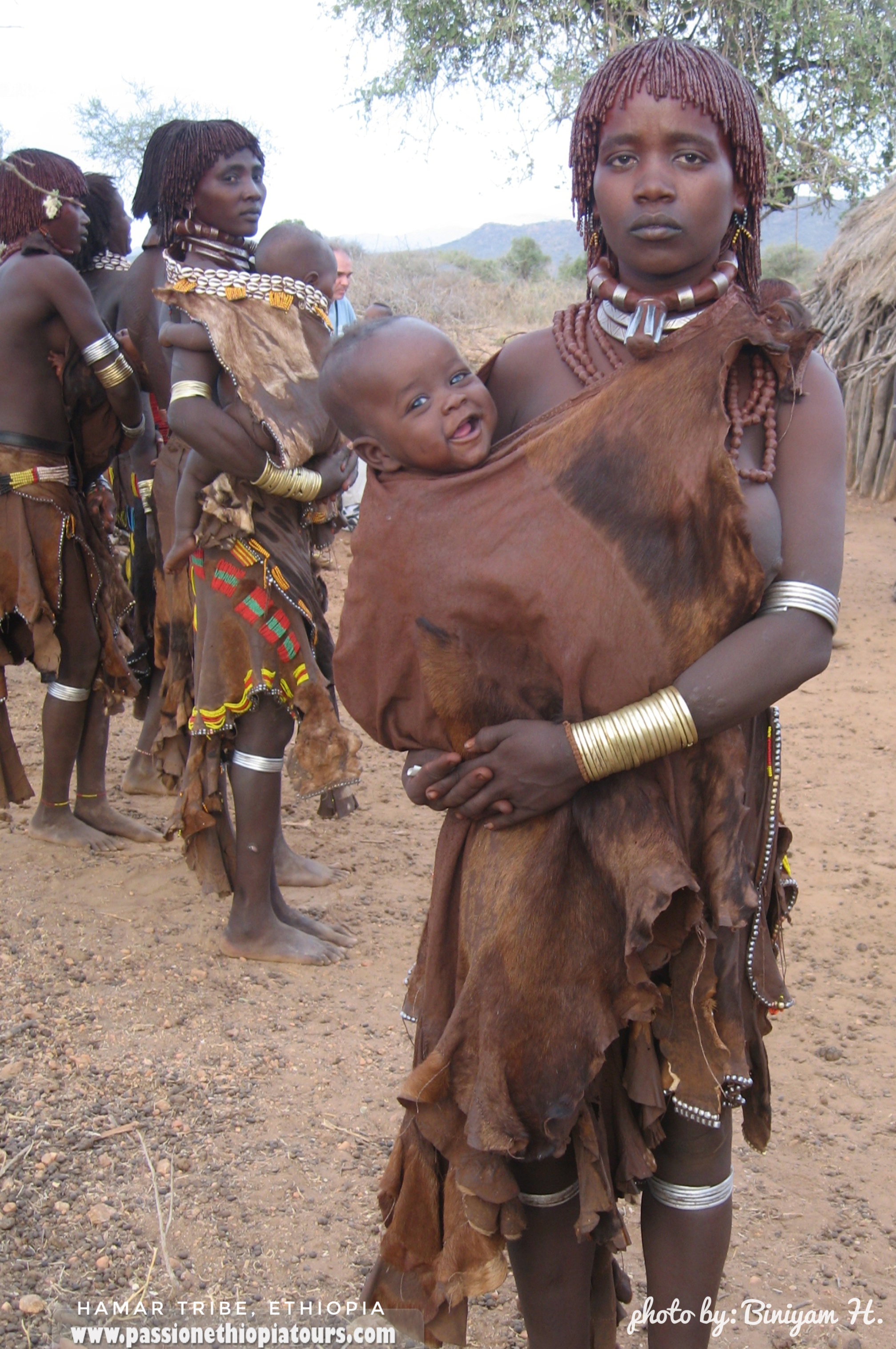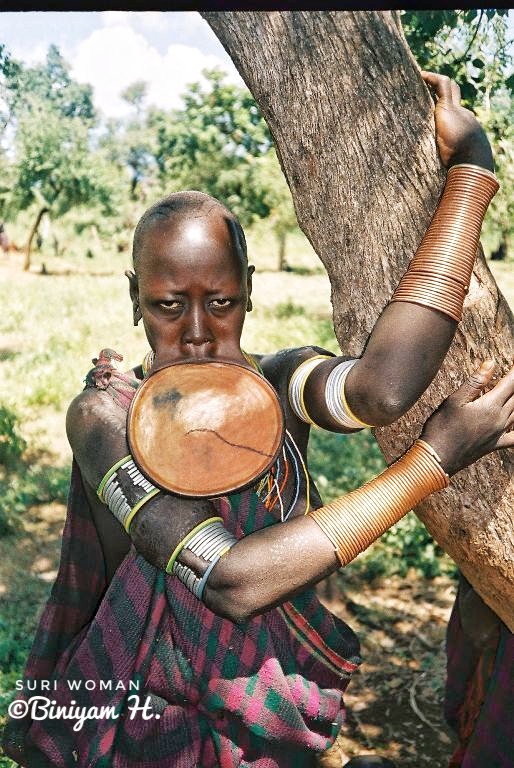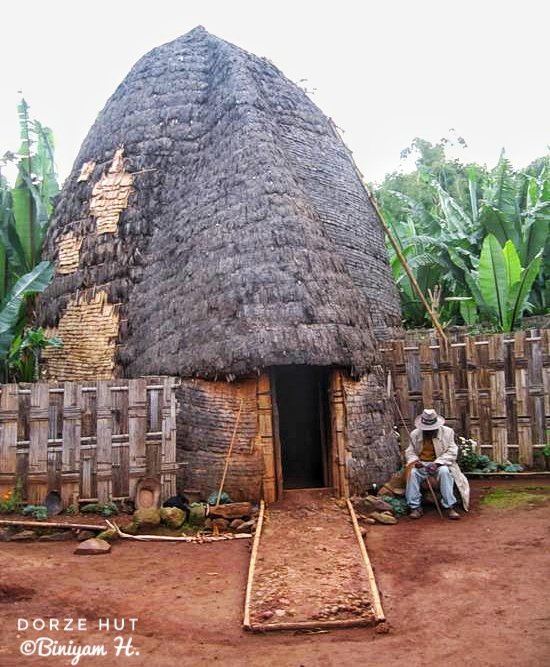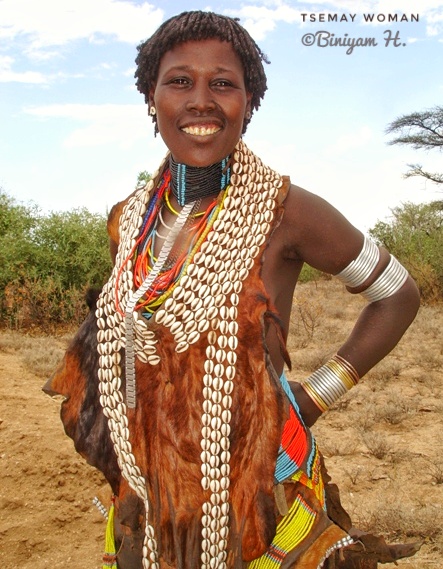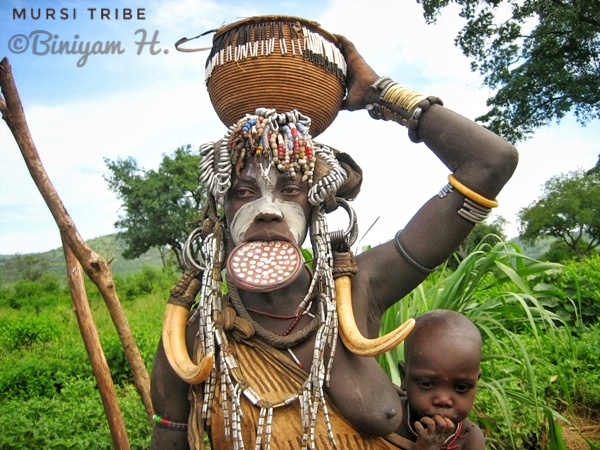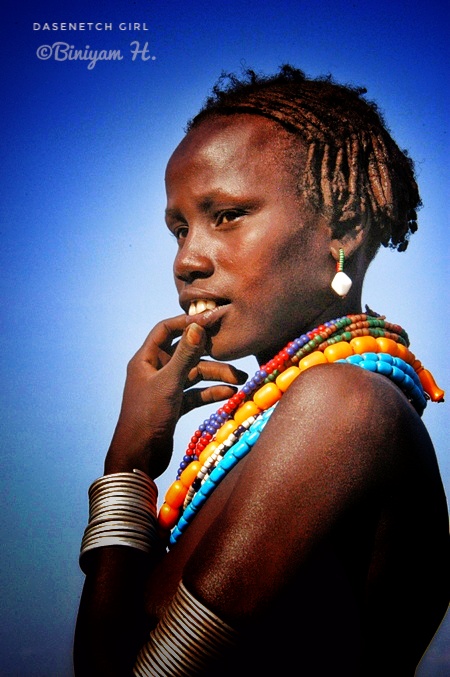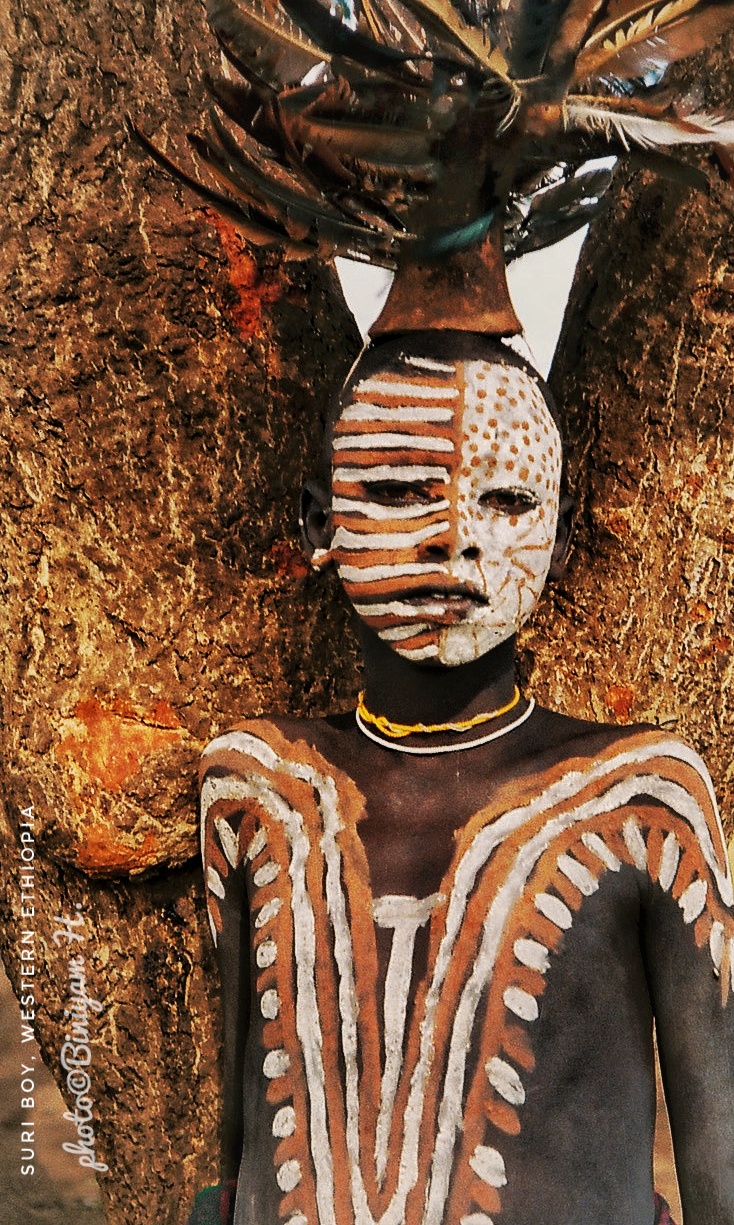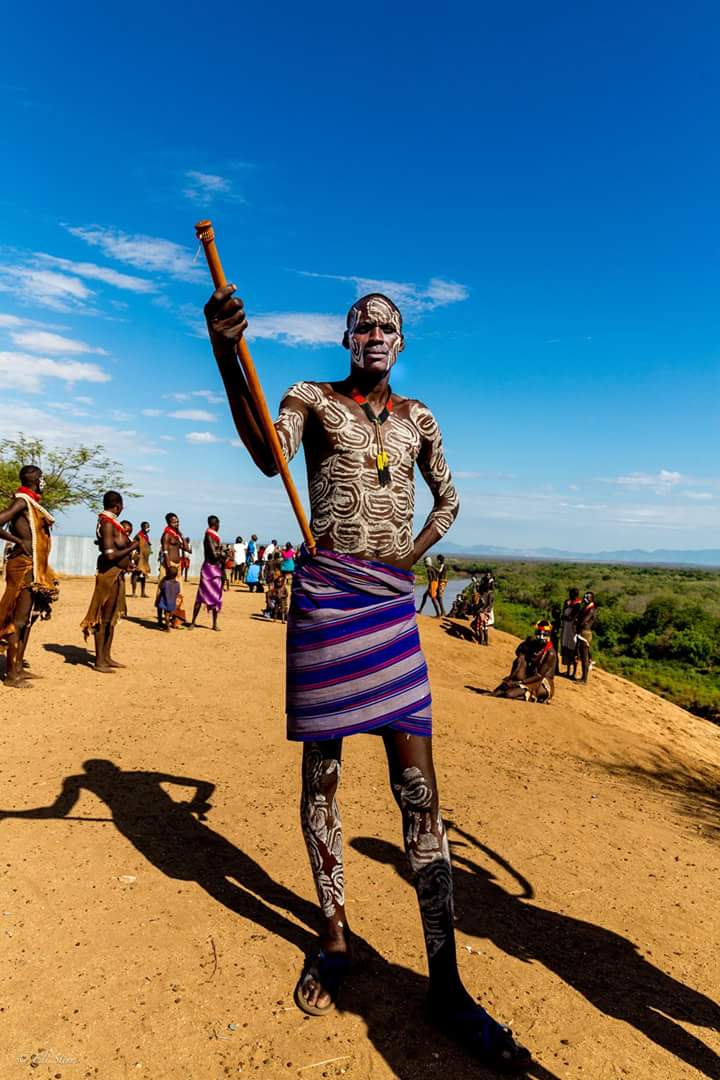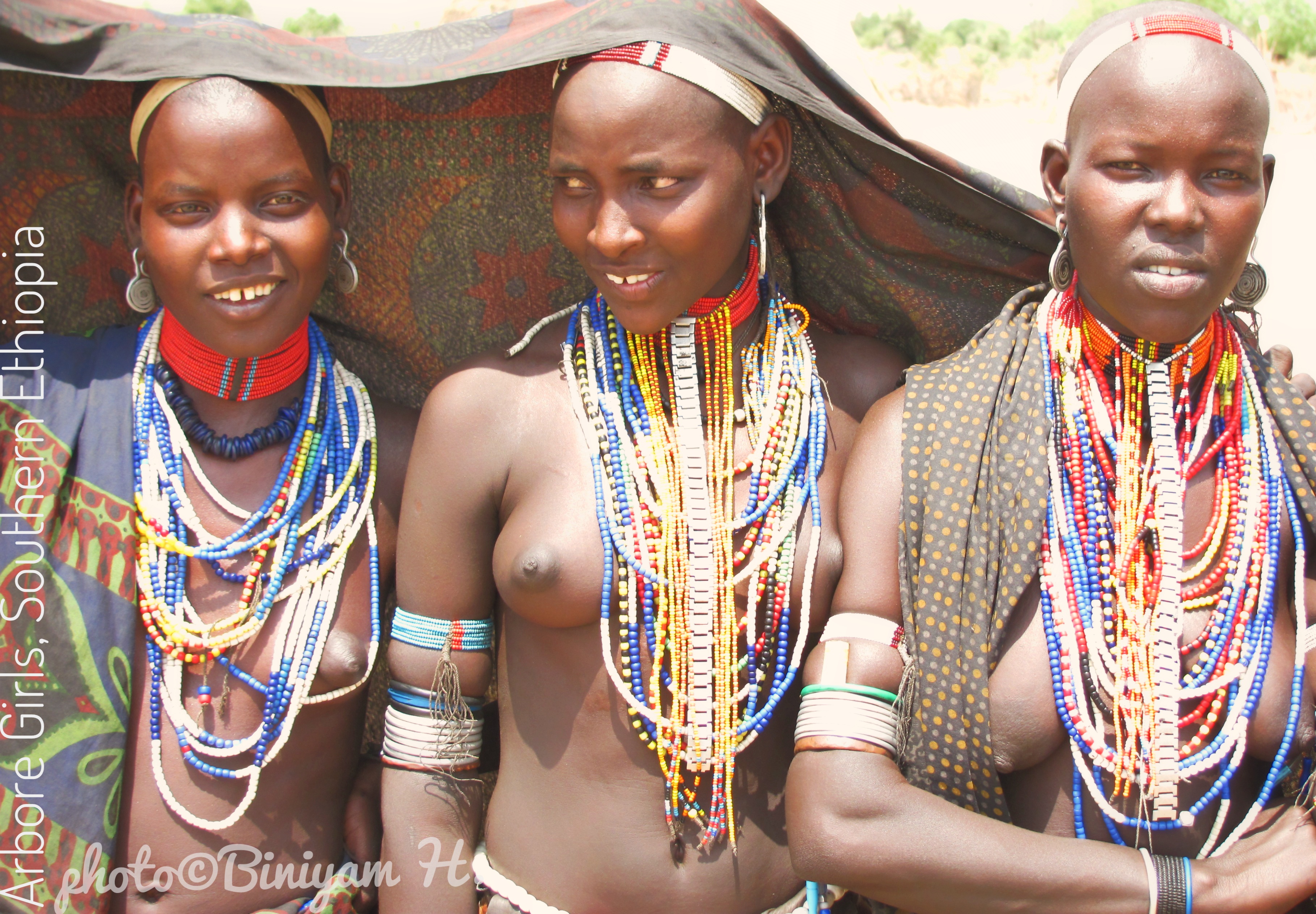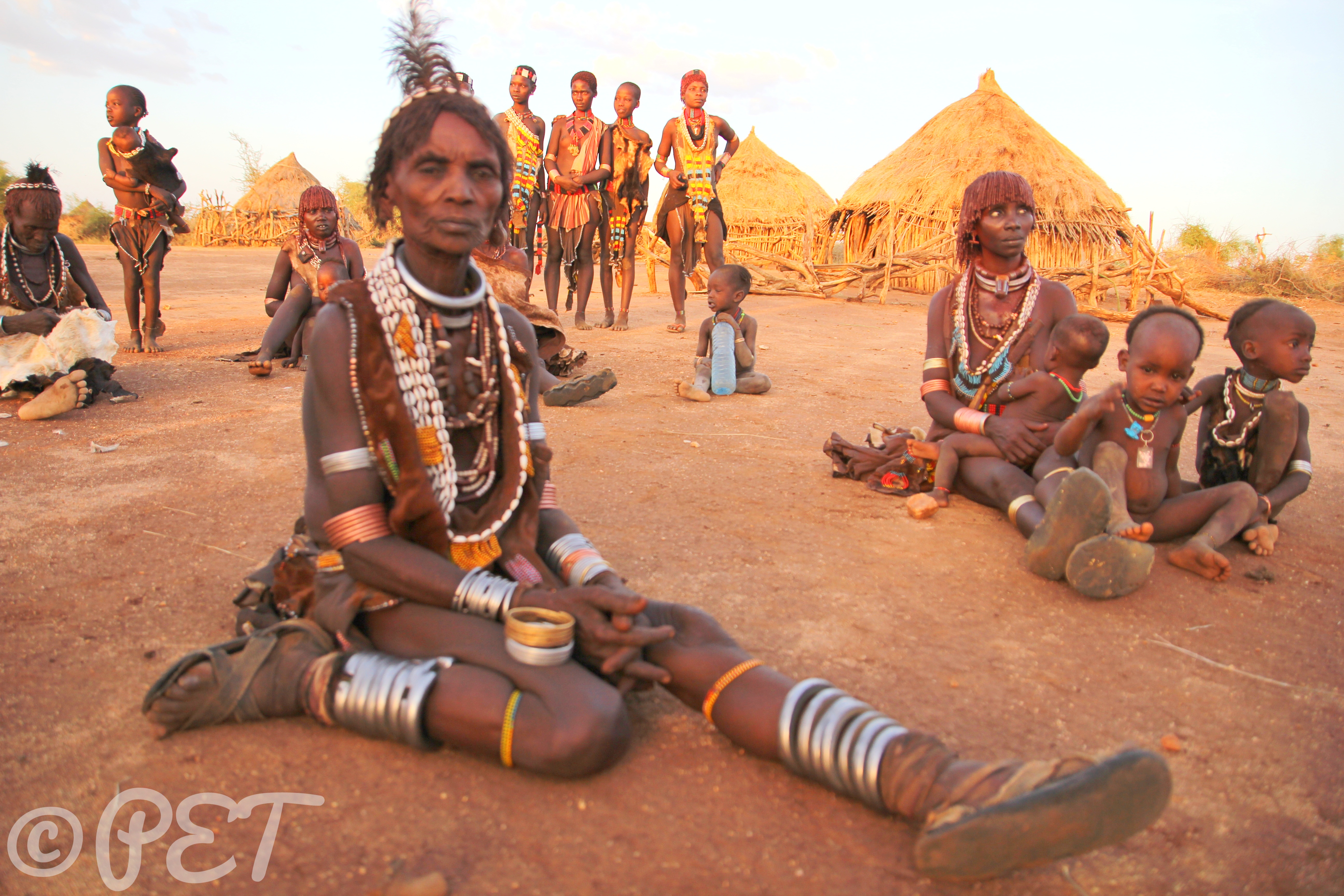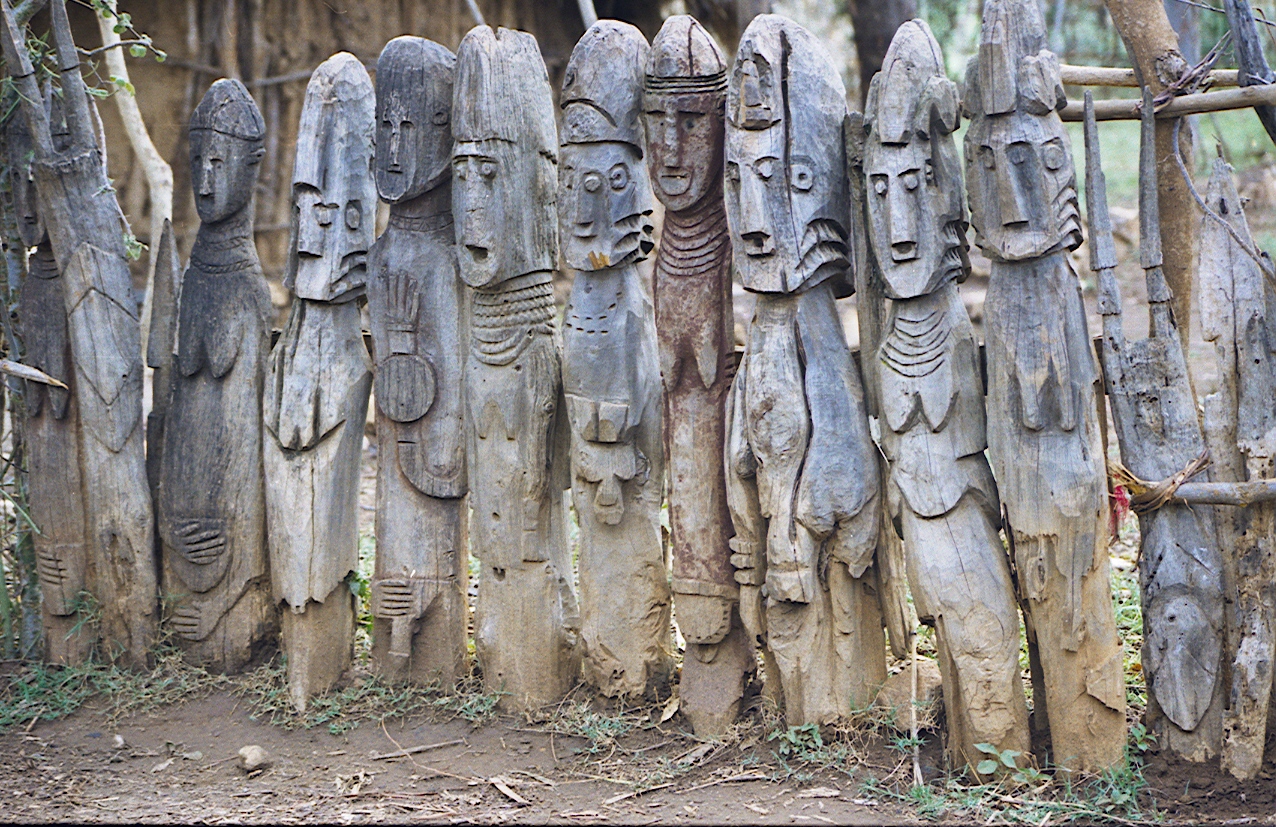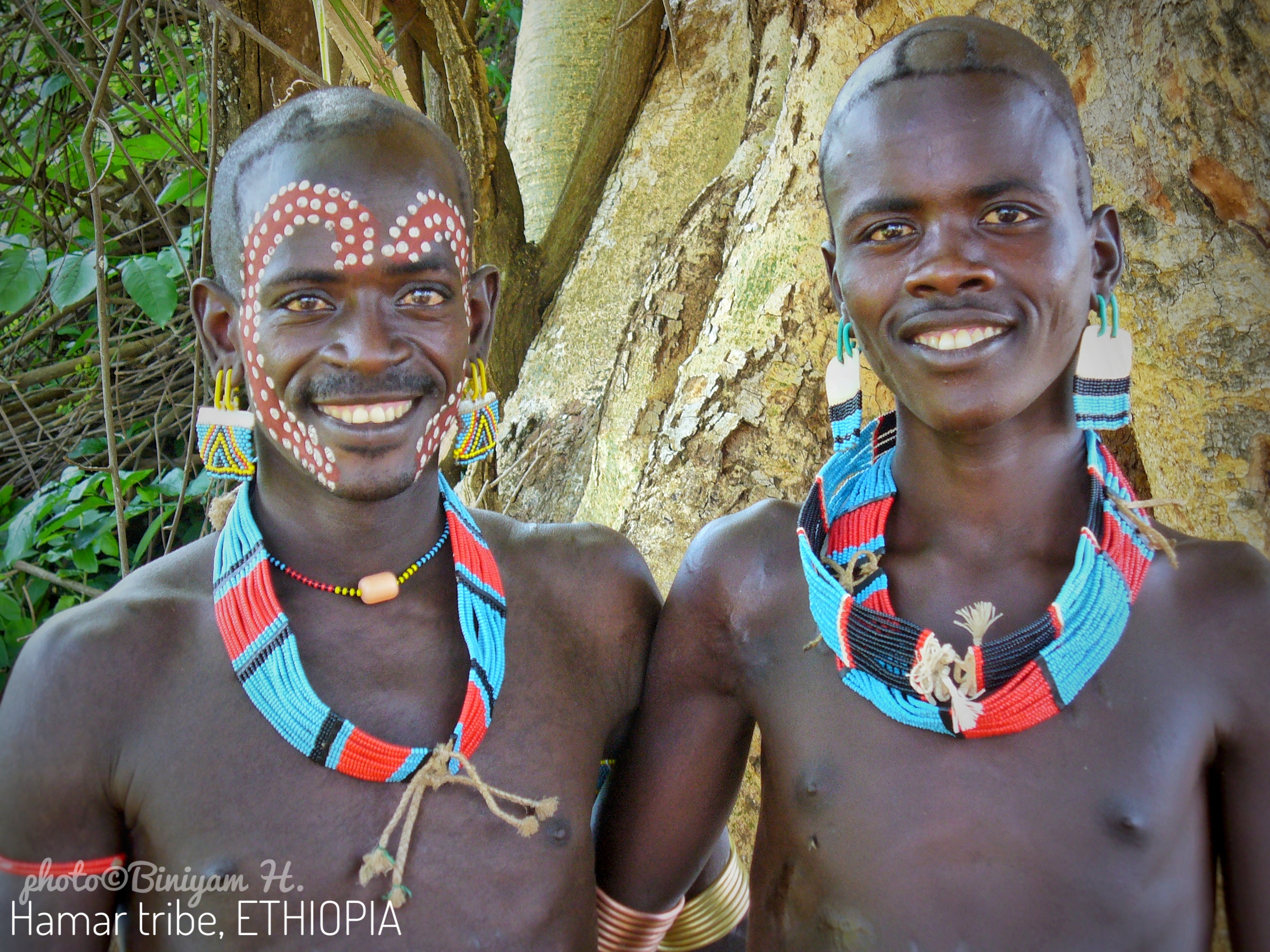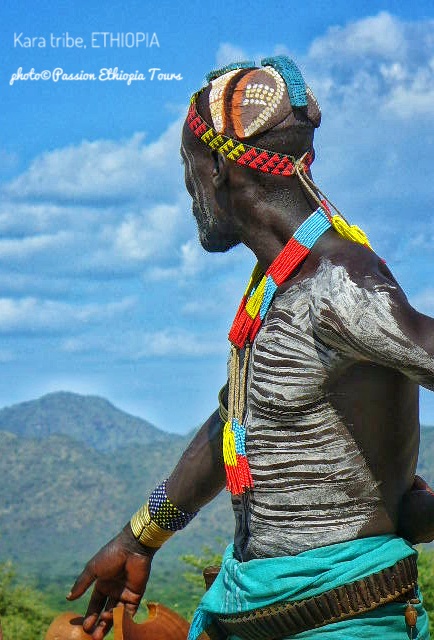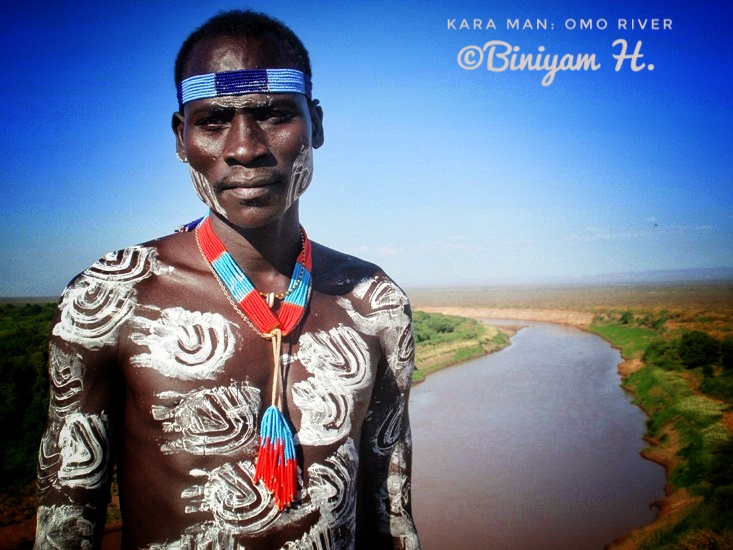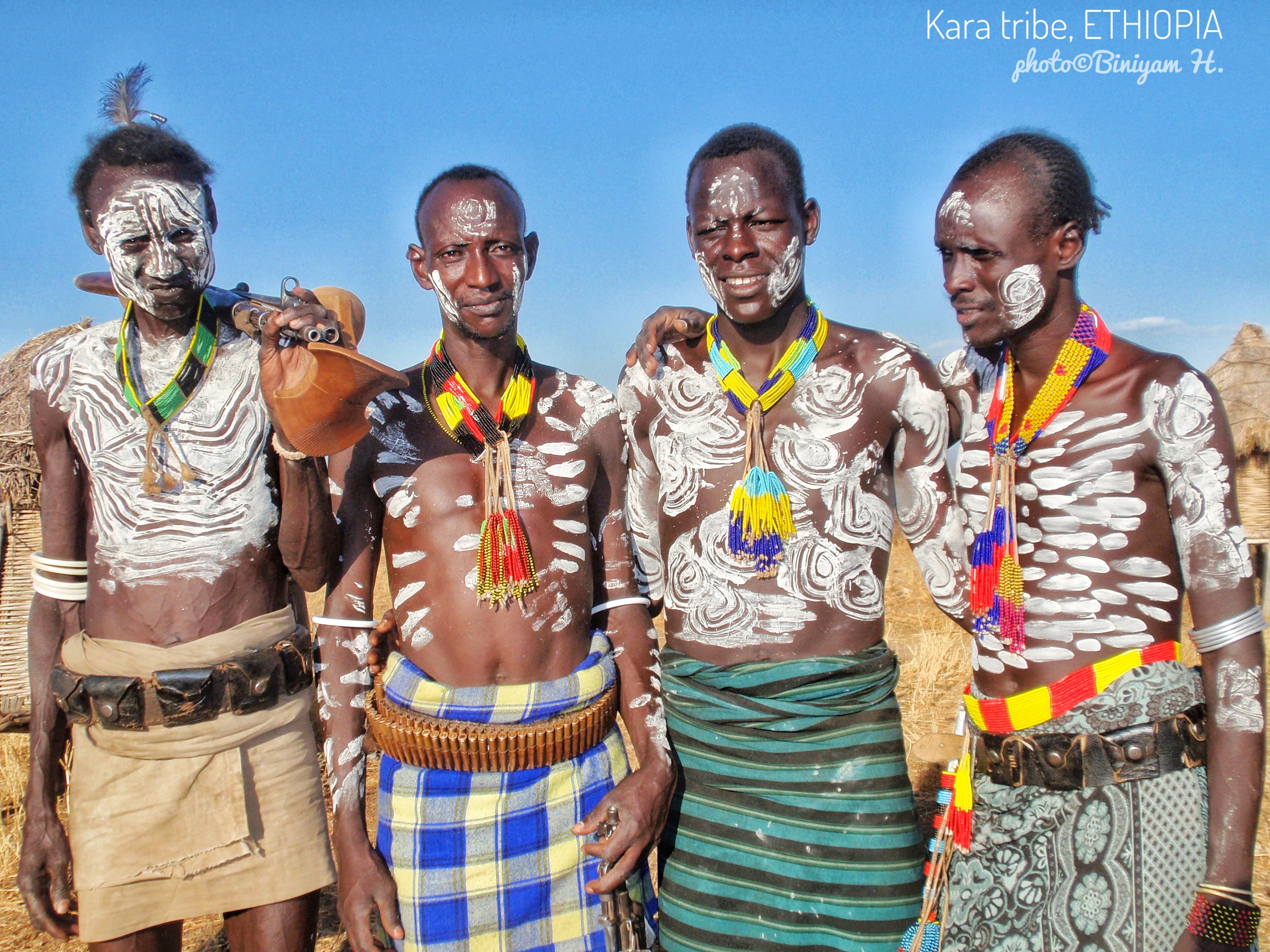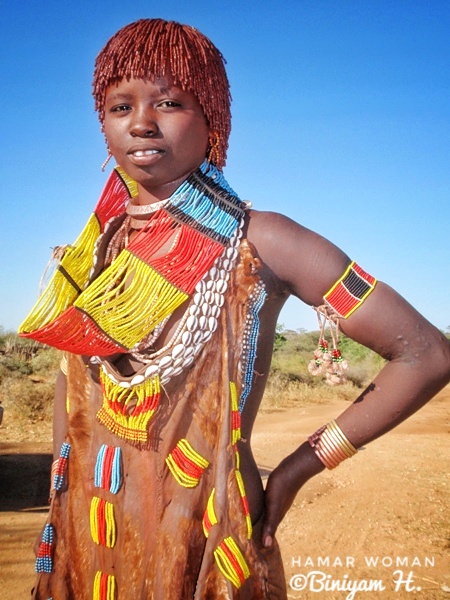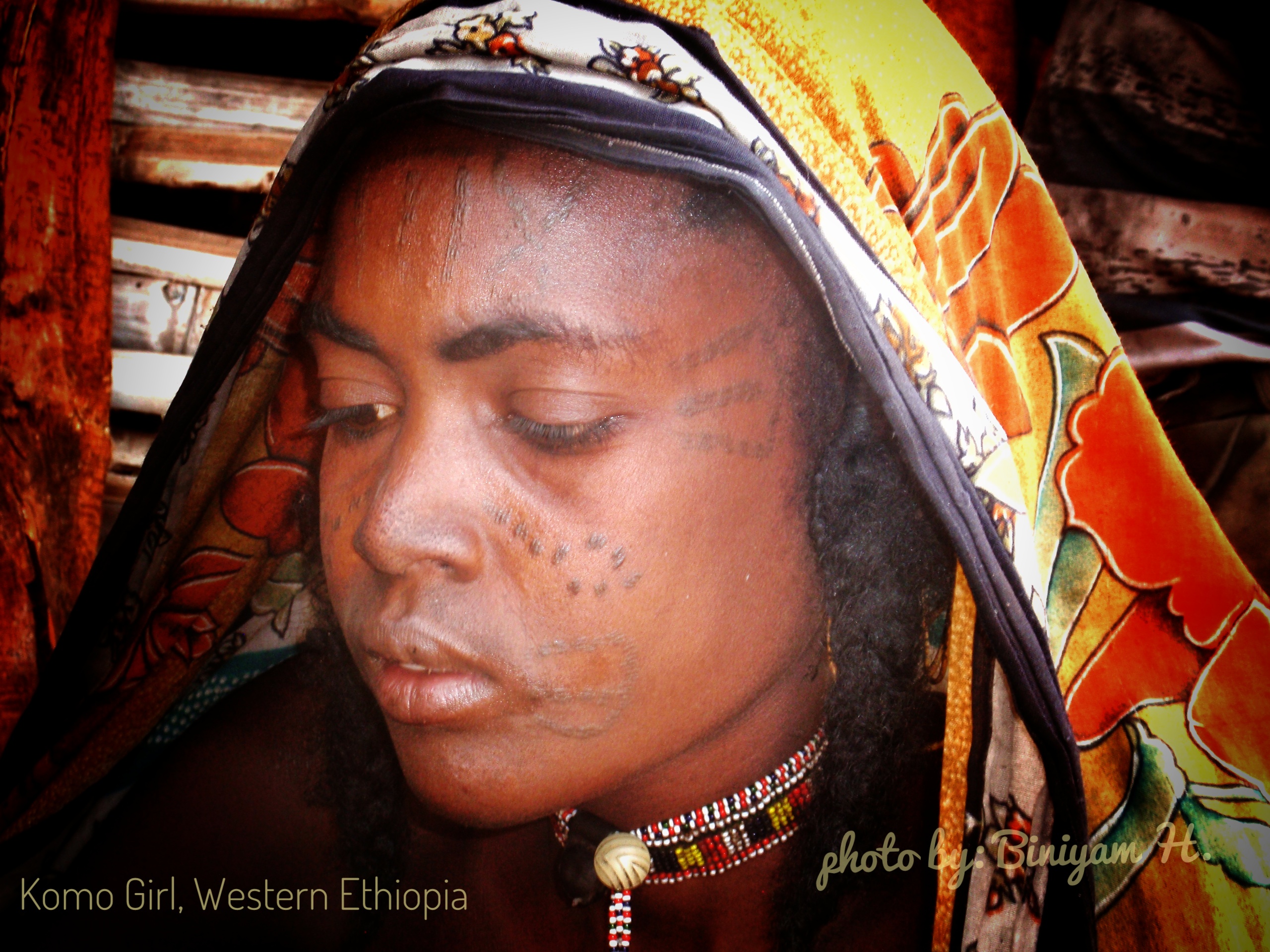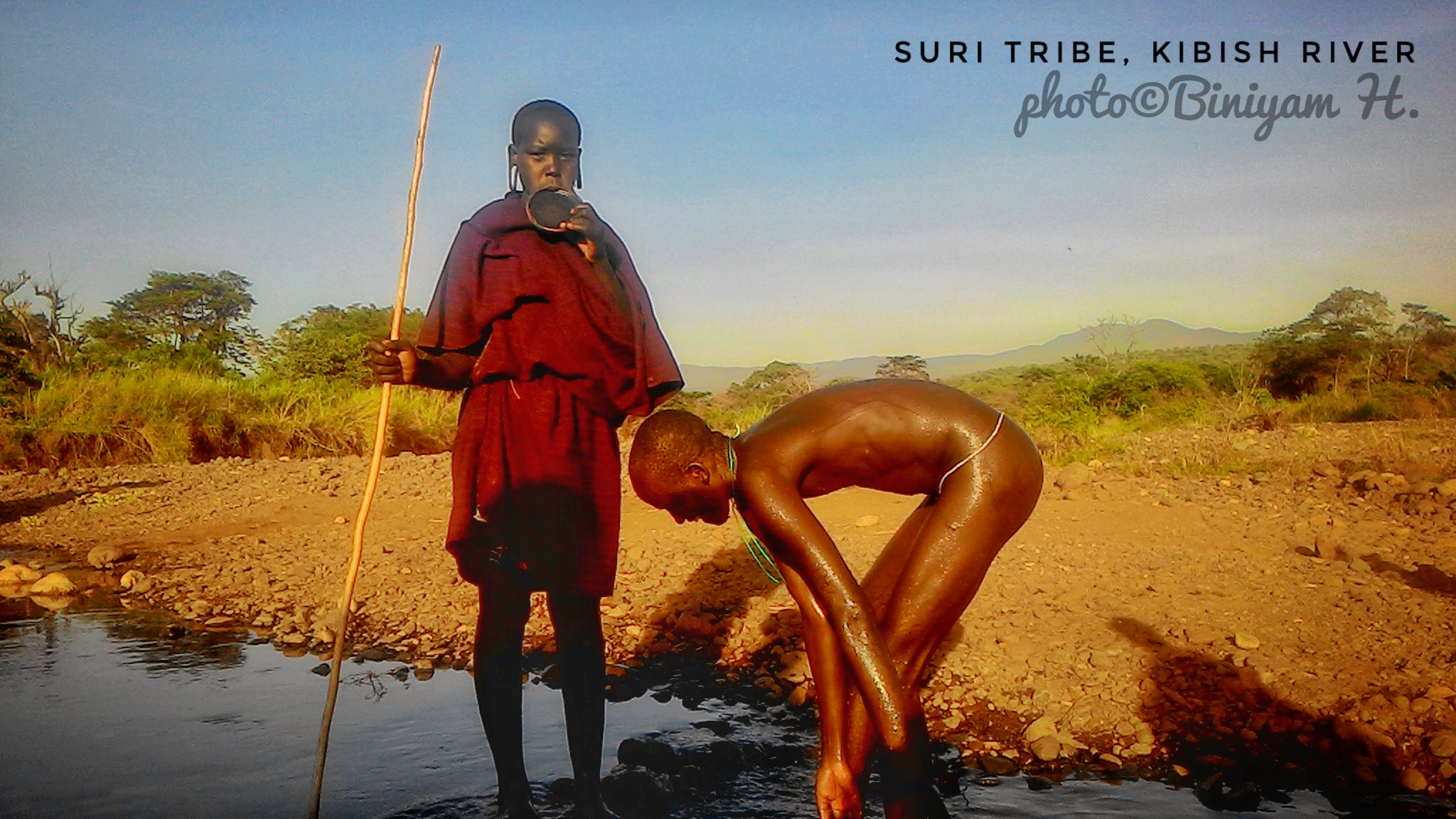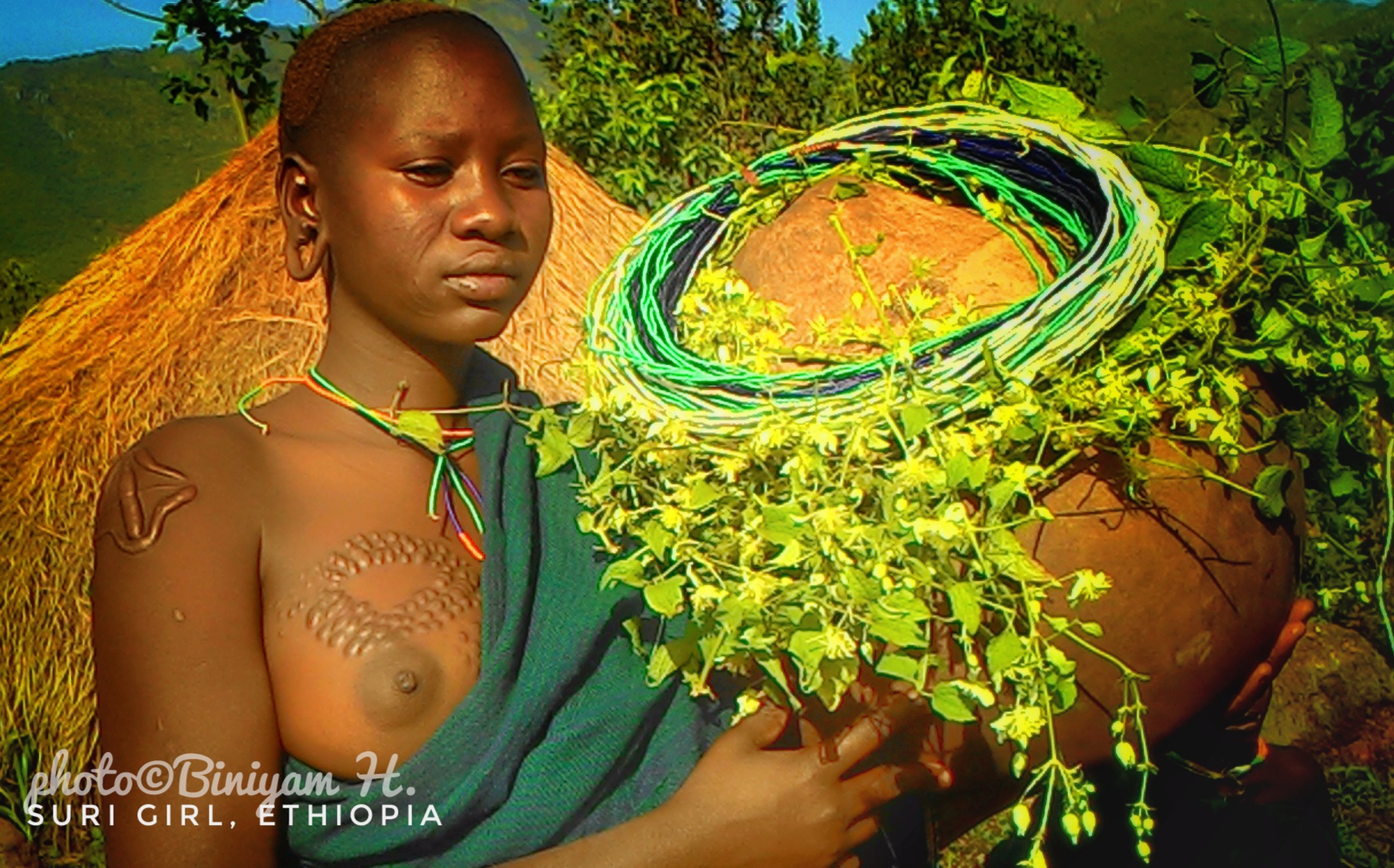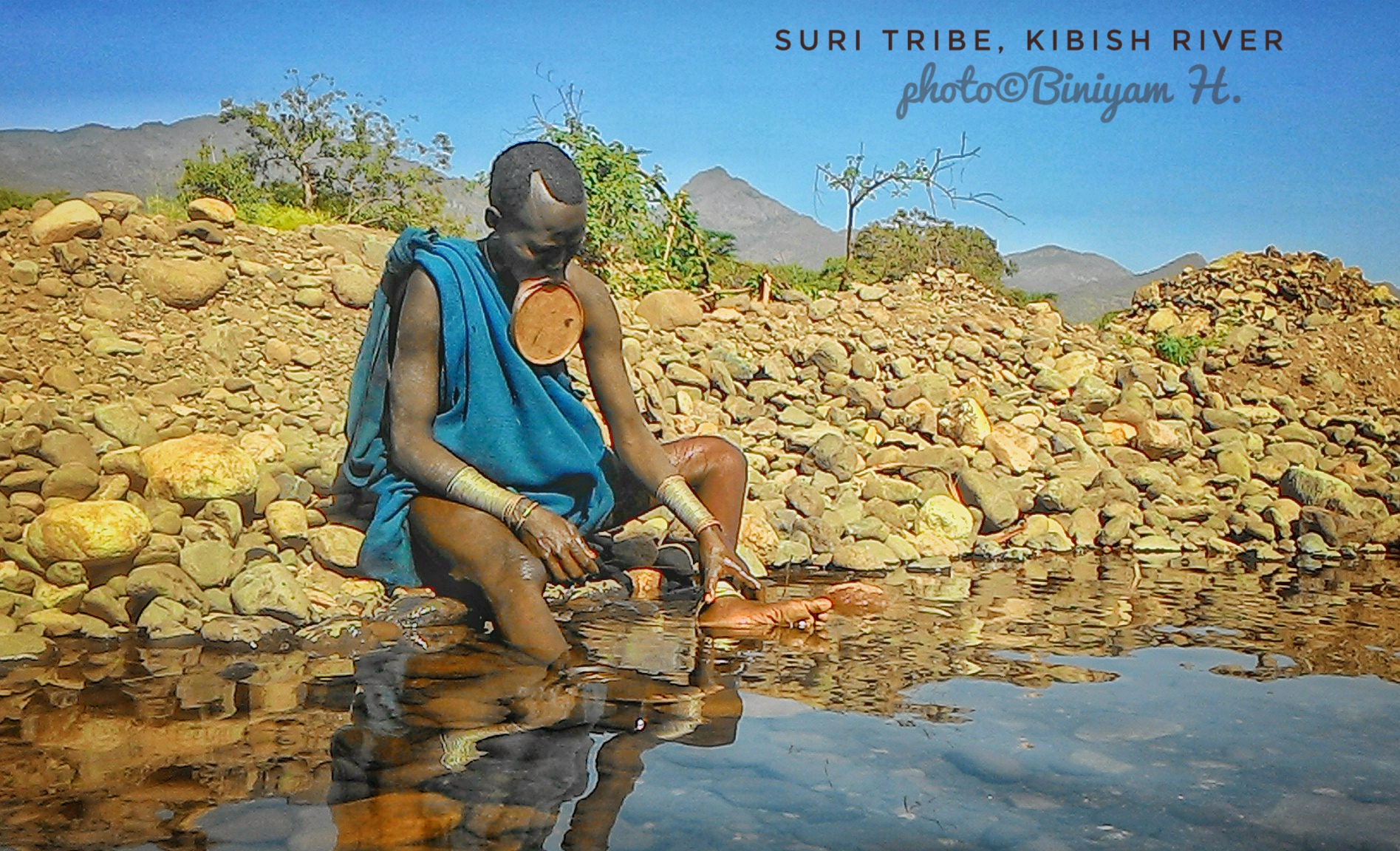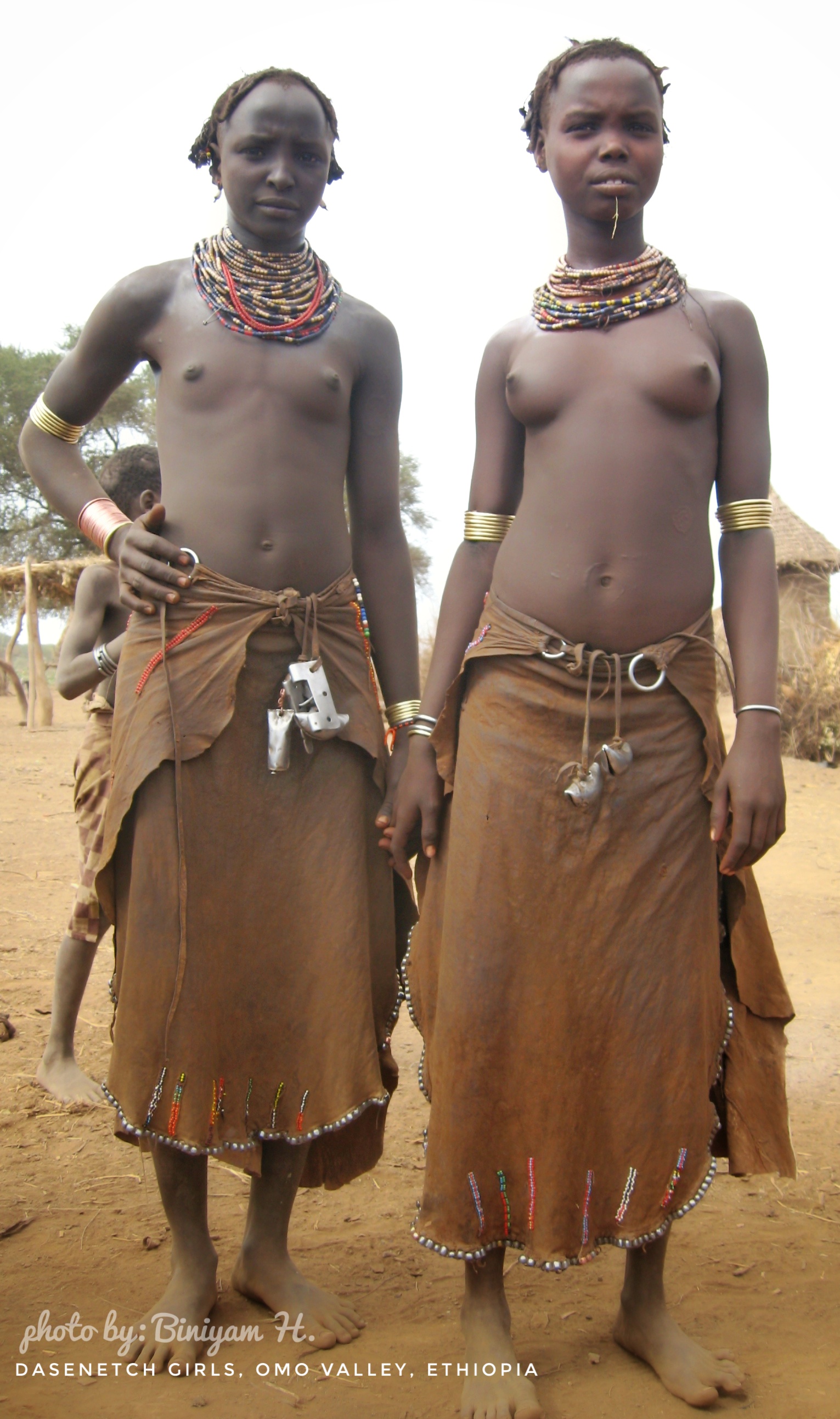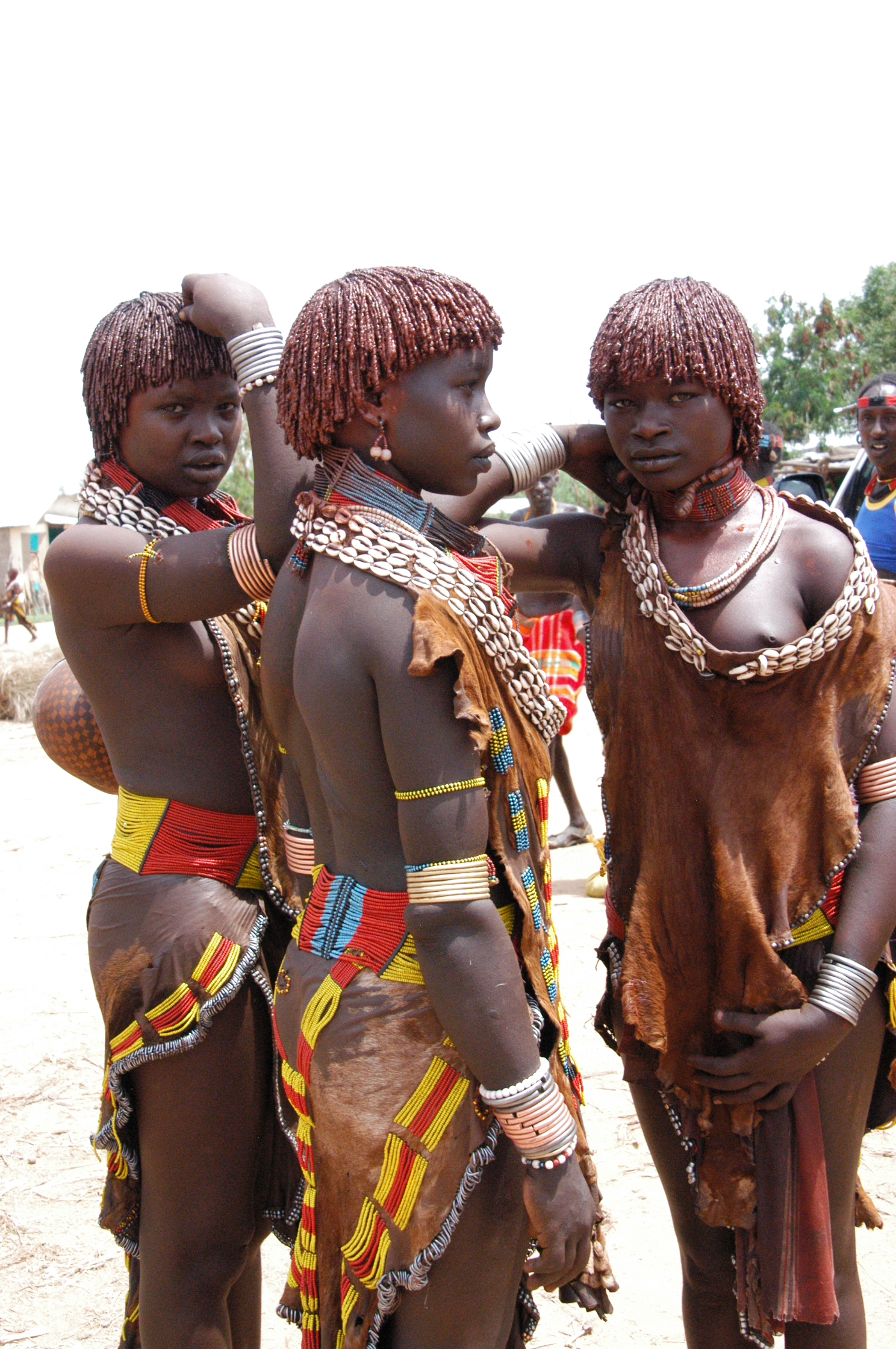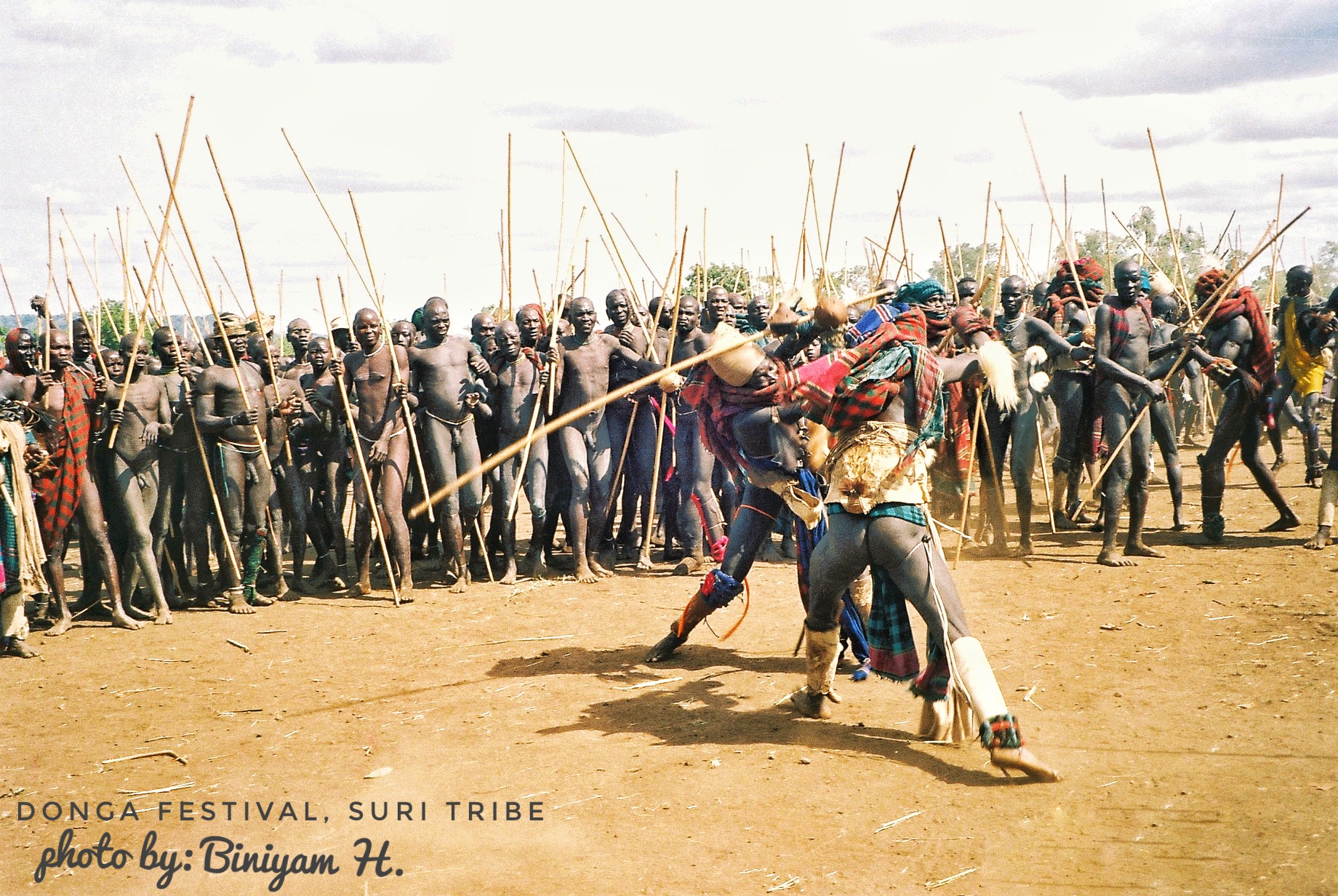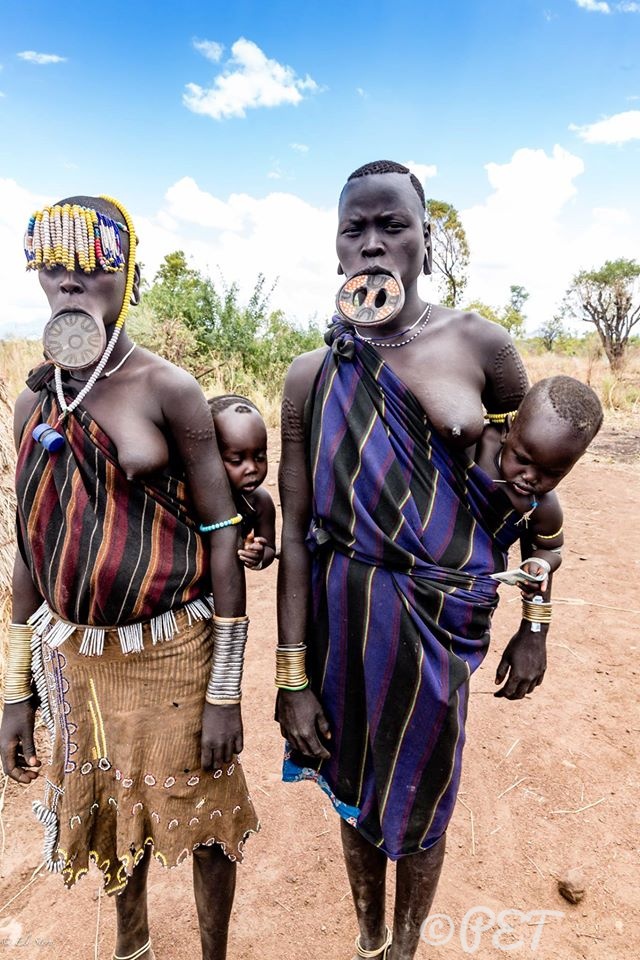Culture
Ethiopia, an old country beyond all imaginations, has culture and traditions dating back over 3000 years. With over 80 different Ethnic groups with their own language, culture and traditions. The strong religious setting, celebrations and festivals play an important part in every ones daily life. Church ceremonies are a major feature of Ethiopian life. The events are impressive and unique. The Ethiopian Orthodox Church has its own head, follows its own customs, and is extremely proud of its fourth century origins. Ethiopia's Islamic tradition is also strong and offers colorful contrast, particularly in the eastern and south-eastern parts of the country. In fact, there were Ethiopian Muslims during the lifetime of Prophet Mohammed. This rich religious history is brought to life in the romantic walled city of Harar, considered by many Muslims to be the fourth "Holy City" following Mecca, Medina, and Jerusalem.
It is situated following the vast Omo River, the sole feeder of east Africa’s forth-largest lake- Lake Turkana in Kenya. Its landscape is diverse that boarders the Mago and Omo river. It is the center of many ethnic groups with their original culture. It constitutes the inhabitant peoples who live as man’s forefather lived thousands of years back. It is the only place in Africa free of any influence of colonization, even isolated from other regions in Ethiopia. There are also very untouched national parks – Mago and Omo. These parks are the ideal places for game viewing and birding.
LANGUAGE
Ethiopia has 83 different languages with up to 200 different dialects spoken. The largest ethnic and linguistic groups are the Oromos, Amharas and Tigrayans.
Ge'ez is the ancient language, and was introduced as an official written language during the first Aksumite kingdom when the Sabeans sought refuge in Aksum. The Aksumites developed Ge'ez, a unique script derived from the Sabean alphabet, and it is still used by the Ethiopian Orthodox Tewahedo Church today. Tigrigna and Amharigna (Amharic) are the modern languages which are derived from Ge'ez. Amharic is the official national language of Ethiopia. English, Arabic, Italian and French are widely spoken by many Ethiopians.
The Ethiopian languages are divided into four major language groups.These are Semitic, Cushitic, Omotic, and Nilo-Saharan.
Semitic
The Semitic languages are spoken in northern, central and eastern Ethiopia (mainly in Tigray, Amhara, Harar and northern part of the Southern Peoples' State regions). They use the Ge'ez script that is unique to the country, which consists of 33 letters, each of which denotes 7 characters, making a total of 231 characters.
The Semitic Languages:
- Adarigna
- Amharigna
- Argobba
- Birale
- Gafat
- Ge'ez
- Guragigna
- Chaha group (Chaha, Muher, Ezha, Gumer, Gura)
- Inor group (Inor, Enner, Endegegna, Gyeto, Mesemes)
- Silt'e group (Silt'e, Ulbareg, Enneqor, Walane)
- Soddo group (Soddo, Gogot, Galila)
- Tigrigna
- Zay
- Cushitic
The Cushitic languages are mostly spoken in central, southern and eastern Ethiopia (mainly in Afar, Oromia and Somali regions). The Cushitic languages use the Roman alphabet and Ge'ez script. For example, Oromo is written in the Ge'ez script whereas Somali is written in the Roman alphabet.
The Cushitic Languages:
- Afarigna
- Agewigna
- Alaba
- Arbore
- Awngi
- Baiso
- Burji
- Bussa
- Daasanech
- Gawwada
- Gedeo
- Hadiyya
- Kambatta
- Kemant
- Konso
- Kunfal
- Libido
- Oromigna
- Saho
- Sidamigna
- Somaligna
- Tsamai
- Werize
- Xamtanga
- Omotic
The Omotic languages are predominantly spoken between the Lakes of southern Rift Valley and the Omo River.
The Omotic Languages:
- Anfillo
- Ari
- Bambassi
- Basketto
- Bench
- Boro
- Chara
- Dime
- Dizzi
- Dorze
- Gamo-Gofa
- Ganza
- Hammer-Banna
- Hozo
- Kachama-Ganjule
- Kara
- Kefa
- Kore
- Male
- Melo
- Mocha
- Nayi
- Oyda
- Shakacho
- Sheko
- Welaytta (Welamo)
- Yemsa
- Zayse-Zergulla
- Nilo-Saharan
The Nilo-Saharan languages are largely spoken in the western part of the country along the border with Sudan (mainly in Gambella and Benshangul regions).
The Nilo-Saharan Languages:
- Anuak
- Berta
- Gobato
- Gumuz
- Komo
- Kunama
- Kwama
- Kwegu
- Majang
- Me'en
- Murle
- Mursi
- Nera
- Nuer
- Nyangatom
- Opuuo
- Shabo
- Suri
- Uduk
OMO VALLEY AND ITS PEOPLE
•• Untainted with any outside influence, the indigenous Southern region boasts with its scenic landscape and impressive culture. Here in this vast expanse of Rift Valley land, varied cultural features under any restriction of time are being reflected. This land comprises an eclectic collection of people, language and norms existing in an immense region and clustered in hamlets and it undeniably makes visitors to be in their elements for their part of life.
•• The Omo Valley is unique in that four of Africa’s major linguistic groups including the ‘endemic’ Omotic languages are represented within one relatively small area. To anthropologists; the Omo Valley is not far from being the proverbal ‘Living Museum’. The area is home to many diverse and fascinating peoples and cultures:

